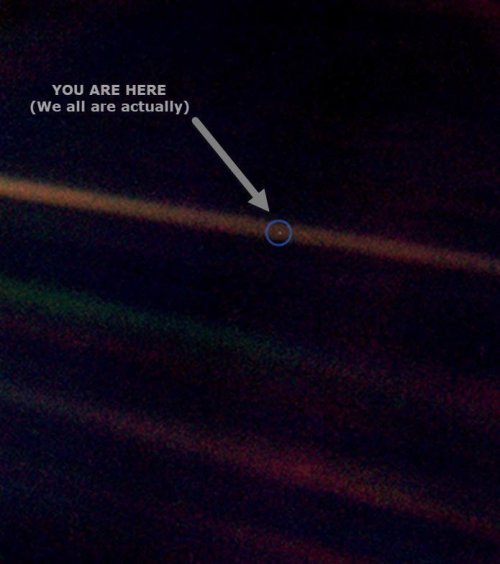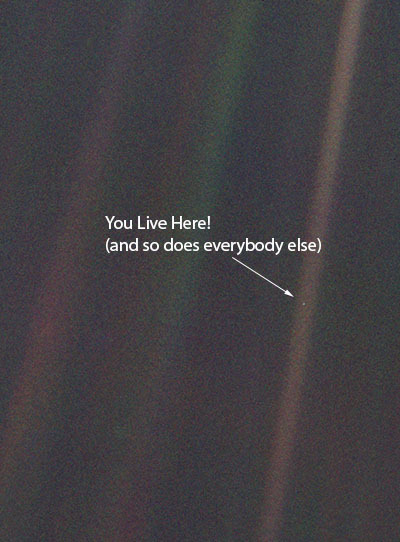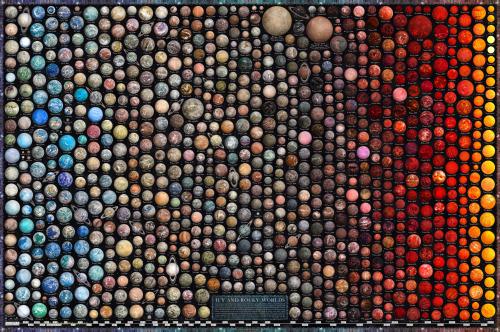The Milky Way In The Direction Of Vulpecula And Cygnus // AC1000

The Milky Way in the direction of Vulpecula and Cygnus // AC1000
More Posts from Ad-astra-affecte-spe and Others


Saturn has a mysterious hexagon at its north pole that has refused to give up its secrets, probably because neither Voyager 1 nor Cassini was able to plunge that deep and survive. Harvard scientists Rakesh Yadav and Jeremy Bloxham might have finally started to figure out what causes this peculiar feature. They believe that vortexes occur at the planet’s north pole because of atmospheric flows deep within the gas giant, and that these vortexes pinch an intense horizontal jet near the equator—which is what warps the storm into a hexagon. It still looks unnatural though.....!!!


Lunar halo
@picabuzz






cancel your plans we’re thinking about the pale blue dot voyager pic tonight

Sh2-136, Ghosts of the Cosmos

Over 800 terrestrial exoplanets visualized and arranged according to their equilibrium temperature and size.
chart by u/mVargic


working in space (x)

Io's Close-Up by NASA's Marshall Space Flight Center
Two spiral galaxies, NGC 6040 and NGC 6039, are merging together at the right side of this Hubble image. NGC 6039 is seen face-on and is circular in shape. NGC 6040 seems to lie in front of the first one. In the lower-left corner, cut off by the frame, the elliptical galaxy NGC 6041 — a central member of the galaxy cluster that Arp 122 resides in — appears as light radiating from a point. The color image was made from separate exposures taken in the visible and infrared regions

-
 reiblu reblogged this · 7 months ago
reiblu reblogged this · 7 months ago -
 fabrigaytor reblogged this · 1 year ago
fabrigaytor reblogged this · 1 year ago -
 skarlettriott reblogged this · 1 year ago
skarlettriott reblogged this · 1 year ago -
 sincerelyluminastra reblogged this · 1 year ago
sincerelyluminastra reblogged this · 1 year ago -
 sincerelyluminastra liked this · 1 year ago
sincerelyluminastra liked this · 1 year ago -
 mandy4-4 reblogged this · 1 year ago
mandy4-4 reblogged this · 1 year ago -
 echidnana liked this · 1 year ago
echidnana liked this · 1 year ago -
 david-watts reblogged this · 1 year ago
david-watts reblogged this · 1 year ago -
 7i74 reblogged this · 1 year ago
7i74 reblogged this · 1 year ago -
 sevensfantasia reblogged this · 1 year ago
sevensfantasia reblogged this · 1 year ago -
 theheavenslaughatme liked this · 1 year ago
theheavenslaughatme liked this · 1 year ago -
 newrider liked this · 1 year ago
newrider liked this · 1 year ago -
 oneleggedostrich liked this · 1 year ago
oneleggedostrich liked this · 1 year ago -
 bercesteruh liked this · 1 year ago
bercesteruh liked this · 1 year ago -
 cosmicaffirmations reblogged this · 1 year ago
cosmicaffirmations reblogged this · 1 year ago -
 possenrreisser liked this · 1 year ago
possenrreisser liked this · 1 year ago -
 fad1d reblogged this · 1 year ago
fad1d reblogged this · 1 year ago -
 sage-is-in-fact-very-tired reblogged this · 1 year ago
sage-is-in-fact-very-tired reblogged this · 1 year ago -
 liminalcobalt reblogged this · 1 year ago
liminalcobalt reblogged this · 1 year ago -
 darlenebtheauthor liked this · 1 year ago
darlenebtheauthor liked this · 1 year ago -
 nikidanger reblogged this · 1 year ago
nikidanger reblogged this · 1 year ago -
 nikidanger liked this · 1 year ago
nikidanger liked this · 1 year ago -
 cosmonauttum reblogged this · 1 year ago
cosmonauttum reblogged this · 1 year ago -
 what-the-soul-craves reblogged this · 1 year ago
what-the-soul-craves reblogged this · 1 year ago -
 luvmangosdope reblogged this · 1 year ago
luvmangosdope reblogged this · 1 year ago -
 luvmangosdope liked this · 1 year ago
luvmangosdope liked this · 1 year ago -
 saidgnl liked this · 1 year ago
saidgnl liked this · 1 year ago -
 saturnianocean liked this · 1 year ago
saturnianocean liked this · 1 year ago -
 perpetual-wedgie liked this · 1 year ago
perpetual-wedgie liked this · 1 year ago -
 caspana-blog liked this · 1 year ago
caspana-blog liked this · 1 year ago -
 canttakethisanymorex3 reblogged this · 1 year ago
canttakethisanymorex3 reblogged this · 1 year ago -
 szepkerekkocka liked this · 1 year ago
szepkerekkocka liked this · 1 year ago -
 its-manya liked this · 1 year ago
its-manya liked this · 1 year ago -
 the-yearning-astronaut reblogged this · 1 year ago
the-yearning-astronaut reblogged this · 1 year ago -
 beastwars-transformers reblogged this · 1 year ago
beastwars-transformers reblogged this · 1 year ago -
 thebalenciagabastard reblogged this · 1 year ago
thebalenciagabastard reblogged this · 1 year ago -
 thebalenciagabastard liked this · 1 year ago
thebalenciagabastard liked this · 1 year ago -
 schooloftears liked this · 1 year ago
schooloftears liked this · 1 year ago -
 angelbvn reblogged this · 1 year ago
angelbvn reblogged this · 1 year ago -
 heliosinwater liked this · 1 year ago
heliosinwater liked this · 1 year ago -
 mxll-ory liked this · 1 year ago
mxll-ory liked this · 1 year ago -
 ekoc5808 reblogged this · 1 year ago
ekoc5808 reblogged this · 1 year ago

★•Astronomy, Physics, and Aerospace•★ Original and Reblogged Content curated by a NASA Solar System Ambassador
204 posts























